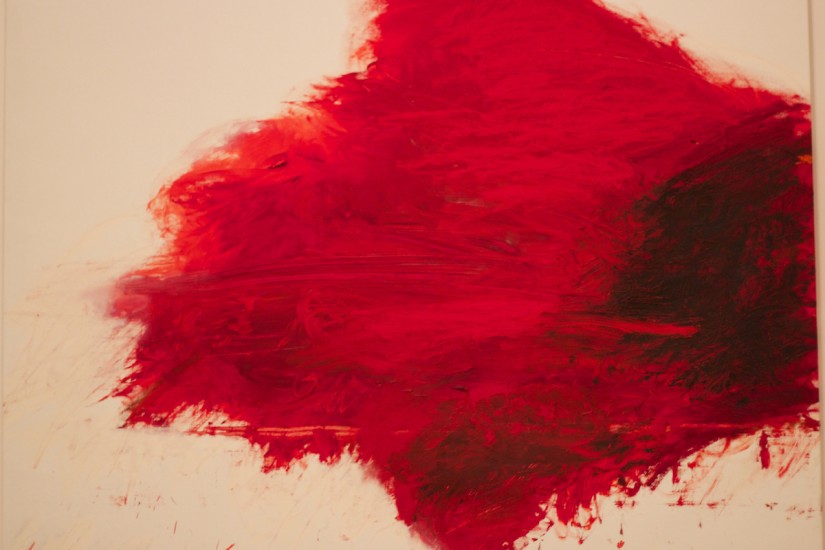Early in Chalk: The Art and Erasure of Cy Twombly, author Joshua Rivkin confesses that the book “is not a biography. This is something, I hope, stranger and more personal.” What, a reader may wonder, could be more personal than a biography? Chalk is one answer to that riddle.
Cy Twombly, a prominent abstract artist whose popularity has only grown since his death in 2011, is best known for his large, abstract paintings—“passionate splashes of color … curves of white chalk looping through darkness.” Rivkin describes the artist’s work as an actualization of “the bewildering slipstream between thinking and feeling.” Twombly’s most staunch admirers are ecstatically unnerved by his canvases; a woman once spontaneously kissed one painting, leaving behind a lipsticked print. (She was, as lovers often are, unrepentant.) But, outside the art world, Twombly’s messy, seemingly thoughtless style inspired confusion and disdain. His scratchy, hectic paintings have led the unimaginative to shrug, “My kid could do that.”
Rivkin is intensely focused on the “complex arrangements of love and domesticity” that filled Twombly’s life—from his early love affair with a married Robert Rauschenberg, to his impenetrable and improbable marriage to the Italian heiress Tatiana Franchetti, to his decades-long entwinement with his assistant and rumored paramour, Nicola del Roscio.
I came to Chalk with an adoring familiarity with Twombly’s work but almost no knowledge of his life. He would have wanted it this way, as he was mysterious with reporters and often secretive with even his closest friends. When the writer Edmund White asked him what his parents did, Twombly said, “They were Sicilian ceramicists.” (This was a lie.) When asked how many paintings would be in his MoMA show, he said, without blinking, “Forty thousand.” The Twombly Foundation, under the presidency of del Roscio, is faithful to the artist’s recalcitrance. Yet Rivkin takes the position that “Life and art are never separate conversations. It’s easy to read—and overread—the biographical in Twombly’s art. He practically dares you.”
